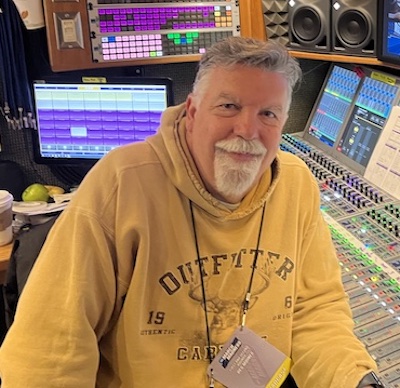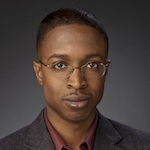NBA All-Star 2024: Multiple Venues, Many Mics Will Keep TNT Sports’ Audio Team on the Move
A wide variety of events offers opportunities for experimentation
Story Highlights
NBA All-Star 2024, taking place in Indianapolis Feb. 16-18, will span not only three days but also two venues: Lucas Oil Stadium and Gainbridge Fieldhouse, home of the NBA Indiana Pacers and the WNBA Indiana Fever and site of the All-Star Game itself on Sunday. Leading up to that event is a packed schedule including practice sessions, the Stephen (Curry) vs. Sabrina (Ionescu) 3-Point Challenge match, and the HBCU Classic presented by AT&T. It’s an itinerary that will keep TNT Sports’ audio team hopping.
“It’s taking place in split venues,” says Dave Grundtvig, senior audio supervisor, remote operations, TNT Sports. “We haven’t had that in a few years. It means we need two of everything: more personnel, more equipment.”

TNT Sports’ Dave Grundtvig: “The NBA All-Star Game is always a fun event. The thing that’s exciting is to try to capture things in a manner that we’ve never heard before.”
To manage the multisite production requirements, the production team added OSA Audio, working at Lucas Oil Stadium, to its regular partner Firehouse Productions, working at the Gainbridge Fieldhouse.
NEP will have a presence at both sites. EN1 A, B, C, and D units will be deployed at the Fieldhouse for the Friday and Sunday events and the game; ND2’s four trailers will be at Lucas Oil Stadium. In addition, SS6 will handle the studio show, and NCP11 will cover the entertainment portions at the Fieldhouse.
In terms of personnel, A1 Jason Blood will handle A1 duties for Friday events and Sunday’s game, and A1 Jeff Walker will mix the Saturday events. Submixers Pat Thornton will work from the stadium; Brian Robertson, at the Fieldhouse. Victor Victoria will manage the game’s RF, with Nicholas Grundtvig and Jay Davis as A2s, managing effects microphones.
An Assortment of Mics
Grundtvig expects to deploy a range of microphone types for the game and events. Boundary mics, such as the Shure MX391, will pick up vibrations from the court, such as footfalls and ball bounces. His own custom contact microphones will be mounted on the backboards to capture impact sounds there. Shure TwinPlex lavs will be on the nets to catch the swooshes, as well as on some of the apparatuses used for Skills and other competitions. Shure MXA710 beam-steerable microphone arrays — corporate-meeting products that Grundtvig has adapted for broadcast-sports applications — will be positioned near the baskets.
(It remains to be seen … er, heard … what effect the GlassCourt OS, made by German manufacturer ASB GlassFloor, might have on court SFX. This is the NBA’s first use of the technology, which displays live and replayed video, animations, player tracking, and other interactive motion video. It will be used during the Ruffles NBA All-Star Celebrity Game and the State Farm All-Star Saturday Night at Lucas Oil Stadium. Jan Weber, head of global sales, ASB GlassFloor, allays concerns that the energized surface could emit RF that could interfere with broadcast audio, noting that the transparent court covering is fully shielded from RF emissions.)
Grundtvig looks to music recording for his crowd microphones, choosing such studio stalwarts as the large-diaphragm KSM44 multi-pattern condenser, Shure SM81 condenser, and Neumann 184 small-diaphragm cardioid condenser mic. “We’re producing in 5.1,” he explains. “These kinds of microphones capture the crowd sounds across a wide frequency and dynamic range. We’re trying to give the viewers a real sense of surround with these.”
Pushing the Fader
As many as 10 people on the court will be wearing microphones, with Q5X PlayerMics on two players and on coaches and officials. This source of sound will be heard all weekend, starting with practices.

TNT Sports’ Chris Brown: “The season’s not on the line in games like these, and we want to use availabilities like this as an opportunity to test ideas.”
Chris Brown, VP, operations and technology, TNT Sports, sees athlete audio in general as a priority in sports sound and notes that the NBA All-Star Game offers the opportunity for direct control over that audio with the delay.
“We’re going to push up the fader on the players because the fans love to hear it and it brings them closer to the action,” he says. He notes that exhibition matches like all-star games offer broadcasters an opportunity to push the envelope along with the fader, experimenting incrementally with the game sound: “The season’s not on the line in games like these, and we want to use availabilities like this as an opportunity to test ideas.”
The PlayerMics will have their own separate submix, handled by mixer Walker in a separate section of EN1’s audio compartment. Some player audio will be broadcast in real time, albeit with a slightly extended seven-second profanity delay at the ready, rather than sent to an EVS system for delayed playback during replays, as is the usually the case.
For last year’s All-Star Game, the audio team considered creating two-way conversations with players and announcers, which MLB has been doing for selected games the past two seasons, and would use IFB receivers as well as transmitters. It ultimately wasn’t authorized by the league. Grundtvig says it’s on the table again this year, pending a green light from the NBA.
However, event-type productions like all-star games are good places for audio experimentation, and he says there will be some elements of Dolby Atmos in the workflow, though not as part of the actual broadcast.
There Will Be Music
Unlike Super Bowl, which builds its entertainment around its signature halftime show, the NBA All-Star Game packs genre-spanning music artists into its weekend, dubbed the NBA Crossover Concert series, held at the Indiana Convention Center. This year, the show will feature rappers DJ Zedd, Lil Wayne, and T-Pain (who recently ditched the use of Autotune for his vocals to go more or less au naturel and will perform with a band instead of the usual tracks), bookended by country-music stars Keith Urban and Walker Hayes.
Touring artists will deploy their own sound and other equipment for the shows.
“The NBA All-Star Game is always a fun event,” Grundtvig says. “The thing that’s exciting for me is get to try some new things, new placements, and to try to capture things in a manner that we’ve never heard before.”
